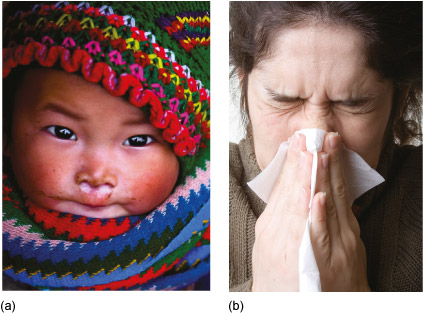1.1 What are infectious diseases?
Infectious diseases are distinguished from other illnesses and disorders because they can be transmitted from someone who is ill either directly or indirectly to other individuals, who then develop the same infectious disease and are also able to pass it on. A familiar example is the ‘common cold’ which almost everyone has experienced at some time in their lives (Figure 1). Non-human animals and plants also suffer from infectious diseases, which cause massive losses to food crops and livestock, but our focus in this course is on infection in humans.

By contrast, health problems that cannot be transmitted between individuals, such as heart disease, diabetes, lung cancer, arthritis and depression, are known as non-communicable diseases (or NCDs). However, a few NCDs also have an infectious component, for example:
- in most cases of cervical cancer there is evidence of infection with a specific virus (the human papilloma virus, or HPV)
- hepatitis viruses cause liver disease and cancer of the liver
- a bacterium (Helicobacter pylori) causes stomach ulcers.
These examples illustrate the point that there is some overlap between some infectious and non-communicable diseases. The biology of bacteria and viruses is the subject of Session 3 Pathogens and infectious diseases.
For completeness, we should mention here that the third major category of diseases, disorders and disabilities is termed injuries, i.e. physical damage to the body caused by accidents or violence.
